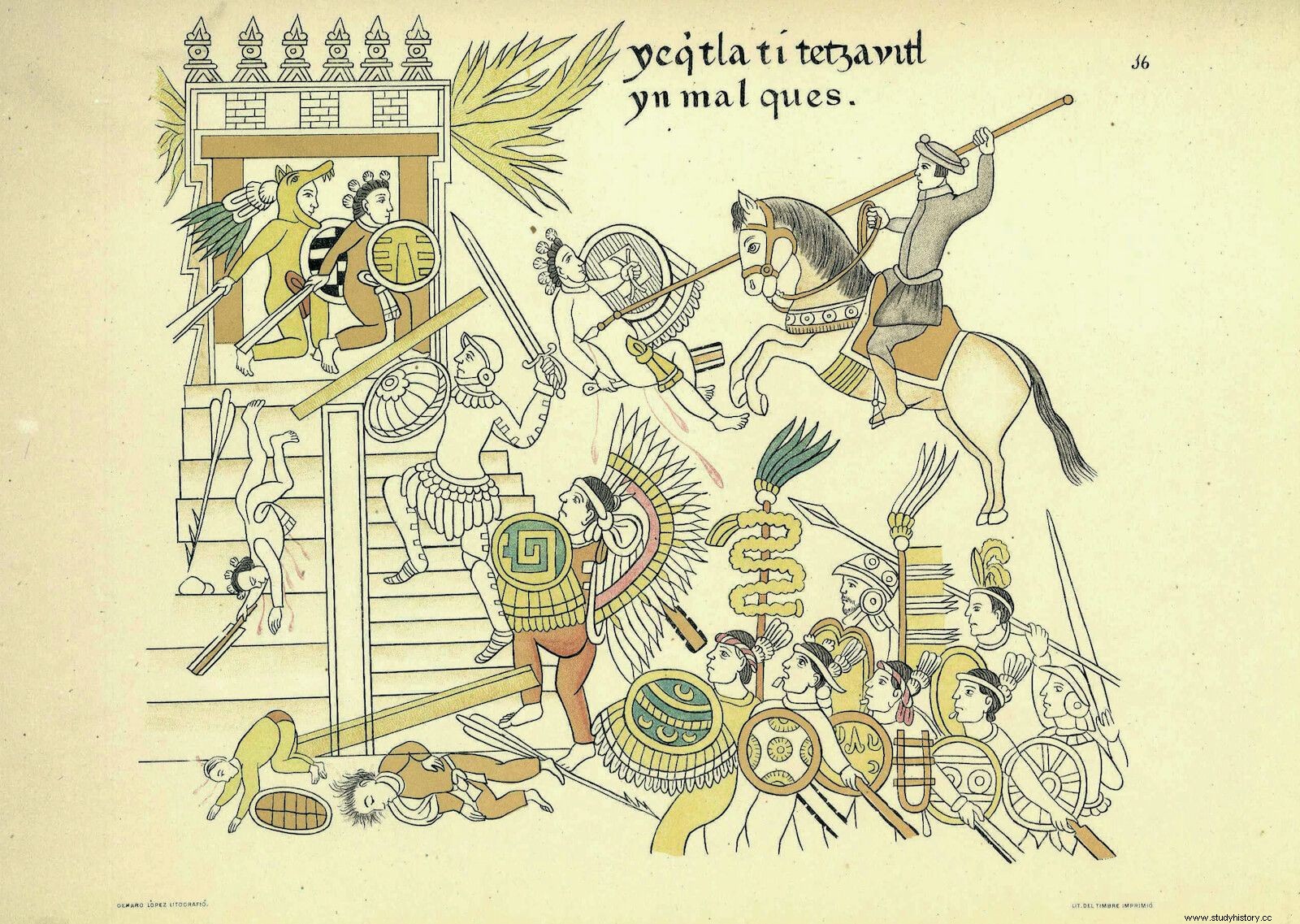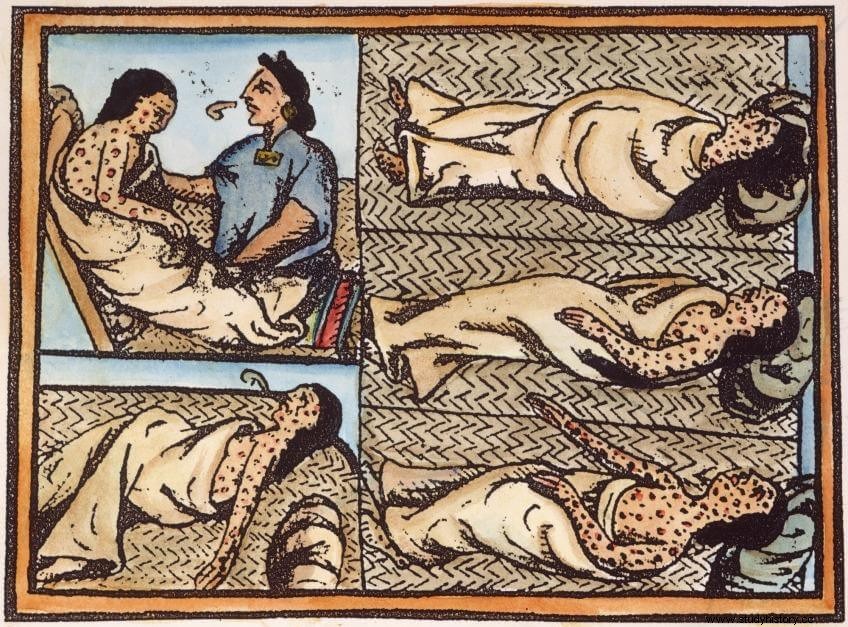
It is well known how diseases transmitted unintentionally by the Spanish (and their African slaves) who moved to the Indies from the end of the 15th century had a devastating effect on the native American populations. Although with different opinions, not only on the scope of the various conditions that took the form of an epidemic and devastated the inhabitants of the New World, but on what phenomenon was the most decisive – the wars of conquest, the very application of an economic and social system perverse, exploitative and cruel colonial or the aforementioned diseases–, the truth is that historical demographers of the stature of Nicolás Sánchez Albornoz, Noble David Cook or Massimo Livi-Bacci have contributed decisive knowledge regarding such a terrible and macabre theme. N. D. Cook himself pointed out that, in terms of mortality caused by diseases of Eurasian and African origin, influenza killed twenty percent of the indigenous people, smallpox thirty-five and measles another twenty-five percent , all before 1540 . As we can see, smallpox stood out very early.
The outbreak of smallpox in America
Produced by the virus Variola virus , the disease made an appearance for the first time on the island of Hispaniola (the current island shared by Haiti and the Dominican Republic) in 1507, but reappeared with force since the end of 1518. In a short period of time, it claimed the lives of nearly a third of the surviving aborigines (since the arrival of Christopher Columbus to the island in 1492). These details are known to us thanks to the information that, in this regard, the Hieronymite friars who, at that time, governed the island sent Carlos I. By then, the disease had also reached Puerto Rico. And he also had to arrive in Cuba. On the other hand, and although other diseases have been proposed, it is very feasible to think that the Inca emperor Huayna Cápac He probably died of smallpox in 1530, or perhaps a few years earlier, as that question is also subject to controversy.
But how did smallpox affect the conquest of Mexico? It was with the arrival from Cuba of the host of Pánfilo de Narváez, a lieutenant of the governor of that island, Diego de Velázquez, appointed with the purpose of arresting and punishing the wayward Hernán Cortés, who had undertaken the conquest of the Mexica Empire without permission from his superior. Already in March-April 1520, smallpox reached from Veracruz to the city of Cempoallan, which, inhabited by the Totonacas, had been the first to adhere to the court cause a year earlier. An important question is whether it was only smallpox that affected the aborigines, since symptoms have also been detected that seem to indicate the presence of typhus and measles. In a very important source, since it includes the aboriginal point of view, the so-called Historic Annals of Tlatelolco, can be read:
It has been claimed that one of the African slaves of Narváez's host, his name Spanishized as Francisco de Eguía, was the unwitting carrier of the virus and infected the Totonac family with the who lived in Cempoallan.
Smallpox, advance guard of Cortés
For the Mexicas, the disease reached Mexico-Tenochtitlan in the month of September, that is, it took less than half a year to reach the central valley from the coast; they defined smallpox as a “great leprosy” , or huey huatl , or a “big rash”, or huey zahuatl . The disease passed through Cuatlan, Chalco, where it was terrible and lasted seventy days, and reached Tlaxcala itself. One of the main lords, Maxixcatzin, died of it. Shortly after, he also killed the tlatoani Mexica Cuitláhuac, with that of the Lord of Tlacopan, Totoquihuatzin (Moctezuma's father-in-law, being replaced by Tetlepanquetzal), and even, in the land of the Tarascans, with the life of the cazonci , that is, from his tlatoani , Zuangua. The epidemic would subside at the end of November in Mexico-Tenochtitlan, but by then it would have left the Mexica not only severely punished numerically but also psychologically.

Now then, if the military operations of the encirclement of the city occurred between the end of May and mid-August 1521, and the Mexicas had a tlatoani energetic as Cuauhtémoc, who would have given orders to eliminate the bodies of those infected quickly, since the climax of the epidemic was exceeded at the end of November 1520, as has been pointed out, is it not possible that we have magnified the importance of the smallpox epidemic as one of the great justifications for the conquest of Mexico-Tenochtitlan? At least one researcher, F. J. Brooks, thinks so. On the other hand, if he harshly attacked the Mexicas, he also did so with their courtly allies:we have already seen that the Tlaxcaltecas, Cholultecas or Tepeacanos were infected. In this last campaign, in Tepeacac, Vázquez de Tapia assured that a third part of the aborigines died and that prevented them from having to fight with many more warriors as the conquest advanced. Furthermore, this chronicler, and former soldier, distinguished between smallpox and measles. For him, the epidemic was twofold:smallpox and measles. In short, the chroniclers in general focused a lot on the affectation of the epidemic among the Mexica enemy, since they used the disease as a factor more dependent on Divine Providence to explain the aboriginal defeat.
In the words of Vázquez de Tapia:
But, of course, that the same disease also decimated allies , whose contest was another key factor in the victory, could not be a matter that was aired, rather the opposite. A chronicler, Fray Juan de Torquemada, referred to the fact that the aborigines who were able to overcome the plague were those who, paying attention to the Spaniards, neither bathed nor scratched their pustules. In addition, he made a count of the demographic capacity favorable to Cortés considering all his allies up to that time, including the province of Tepeacac, with the result of having four hundred and thirty thousand neighbors, that is, households, and without mentioning the populations of many others. small places. For this reason, the joy of the Extremaduran caudillo is not surprising, because "With all that he took heart, with the large number of people who were there for everything and the will with which they showed going to serve him," Torquemada wrote.
An exaggerated importance?
Be that as it may, the great epidemic had unexpected consequences. At the political level, the order of succession was altered in numerous localities, not only in Mexico-Tenochtitlan or in the Tarascan world, it also happened in Chalco and Cholula, for example. And a clever Hernán Cortés always knew how to take advantage of such circumstances to place his acolytes at the head of the government of these localities. But, in addition, in a much more prosaic vital order, there were also great changes. The chronicler López de Gómara explained it this way, perhaps with great exaggeration:the death of many women due to smallpox led to famine , but not so much for lack of bread, but of flour «because, as they have neither mills nor bakeries, the women do nothing but grind their centlie grain. between two stones, and cook. So they fell ill with smallpox, and bread was lacking, and many perished of hunger.”
Bibliography
- G. Baudot and T. Todorov, Aztec Accounts of the Conquest. Historical annals of Tlatelolco , Mexico City, CNCA/Grijalbo, 1990.
- F. J. Brooks, “Revising the Conquest of Mexico:Smallpox, Sources and populations”, Journal of Interdisciplinary History , XXIV, 1993, p. 1-29.
- Nobleman David Cook, The Biological Conquest. Diseases in the New World , Madrid, XXI Century, 2005.
- Massimo Livi-Bacci, The ravages of the conquest. Breakdown and decline of the American Indians , Barcelona, Critique, 2006.
- Nicolás Sánchez Albornoz, The population of Latin America from pre-Columbian times to the year 2000 , Madrid, Publishing Alliance, 1973.
- B. Vázquez de Tapia et alii, The conquest of Tenochtitlán , edition by Germán Vázquez, Madrid, Historia 16, 1988.
Fonts
- Hernán Cortés, Relationship Letters , Barcelona, Sarpe, 1985.
- B. Díaz del Castillo, True history of the conquest of New Spain , edition by Guillermo Serés, Madrid, Royal Spanish Academy, 2011.
- Francisco López de Gómara, History of the Conquest of Mexico , Caracas, Ayacucho, 2007.
- Fray Juan de Torquemada, Indian Monarchy , Mexico City, UNAM-IIH, 1975-1983.
